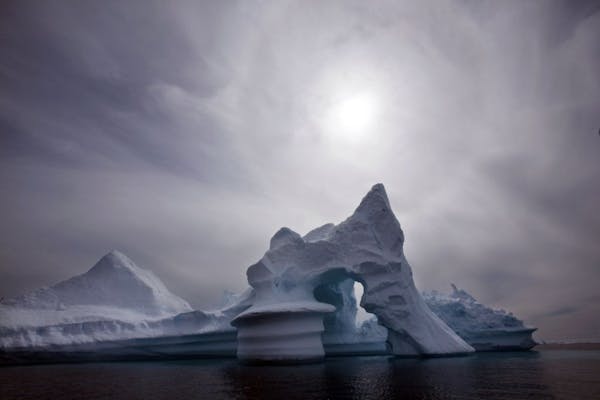In last week's State of the State address, Gov. Mark Dayton articulated a vision for what is "best for Minnesota in the future." His bold statement of support for a clean-energy future, and his challenge to the Legislature to take the next big step forward, firmly secure his position as one of America's leaders on this critical issue.
The governor made clear that his vision for what will make a "better Minnesota" includes all Minnesotans, especially future generations, living in a healthy environment.
He continued: "A healthy life starts with, and depends upon, clean air to breathe, clean water to drink, protected natural environments to enjoy, and a secure ecological future. No one can endure the severe droughts or floods of recent years; endure (or, some, enjoy) our milder, snow-scarce winters; lather on sunscreen to walk outdoors without being greatly alarmed ... Even more alarming is that our state and our nation are still not doing enough to reverse this path toward global catastrophe before it is too late."
The governor mentioned the expeditions I have led, where I witnessed firsthand the drastic impact of a changing climate. But you don't have to be a polar explorer to see these changes with your own eyes. Recent news reports tell the local story:
The Department of Natural Resources suspended the hunting season for our iconic moose, whose population is dangerously collapsing in real time. The National Wildlife Federation reports that with warmer temperatures, migratory waterfowl, pheasants and wild birds will be diminished and large-scale freshwater fish kills will become more frequent, while trout in northeastern Minnesota's cold-water streams are already at a tipping point for survival.
Add to this our recent experience with 1,000-year floods occurring repeatedly in less than 10 years' time.
While the governor sounded alarm bells, he didn't end the story there. He went on: "In Minnesota, we have made real progress in areas like energy conservation, more efficient farming and manufacturing practices, and the development and use of clean, renewable energy, especially wind energy, instead of polluting fossil fuels. The question is: Are we progressing fast enough? Are we doing all we can to utilize other renewables, such as solar, and also to make Minnesota the best place to locate these new industries and their jobs?"
Dayton commended previous legislatures for their pioneering work to expand our use of clean energy, then spoke to the gathered House and Senate leaders:
"I challenge this Legislature to work again with our state's visionary clean-energy advocates, large energy providers, large energy users, other stakeholders, and my administration ... to use your past achievements as springboards for Minnesota's next big leap toward a sustainable energy future."
Minnesota has a set of nation-leading laws passed with broad bipartisan support in 2007: the Renewable Energy Standard, which requires at least 25 percent of electricity to come from renewable sources like wind and solar by 2025; energy efficiency goals requiring utilities to help us save energy in our homes and businesses, and goals to reduce emissions of heat-trapping gases like carbon dioxide -- 15 percent by 2015, 30 percent by 2025 and 80 percent by 2050.
Our renewable-energy laws have worked. They have helped drive billions of private investment and have created thousands of good jobs in the wind and solar industries. But we can and must do more, and do it faster. Minnesota produces no fossil fuels, but we have abundant natural resources and expertise for clean, renewable, local energy production. We can again lead the nation if we set goals for 40 or 50 percent renewable energy, including a significant amount of solar and more aggressive energy efficiency.
We also need to keep our promise to reduce greenhouse gas emissions. We need a plan with specific action steps to get there. We can help show the nation how it can be done and how we can continue to build a strong, sustainable economy at the same time.
The governor received the only bipartisan standing ovation of the evening when he told legislators it was time to move beyond "ideological skirmishes and political stalemates, which offend our state's citizens and jeopardize our state's future. This is our time and our responsibility ... to work together and build a state that works." It was good to see all 201 legislators rise to their feet and applaud the notion that together they can work for a better Minnesota.
The governor has laid out the challenge in a bold and courageous speech. Now it's time for all the good people elected to serve Minnesota to roll up their sleeves and do the hard work.
-----
Will Steger is a polar explorer and president of the Will Steger Foundation.

Johnson: Supporting kids targeted by racist texts
Despite what Trump has said, immigrants bring a lot of value to the U.S.

